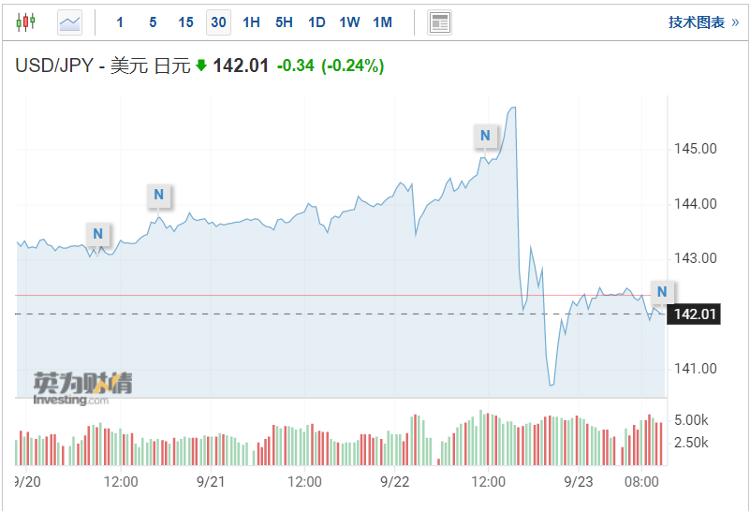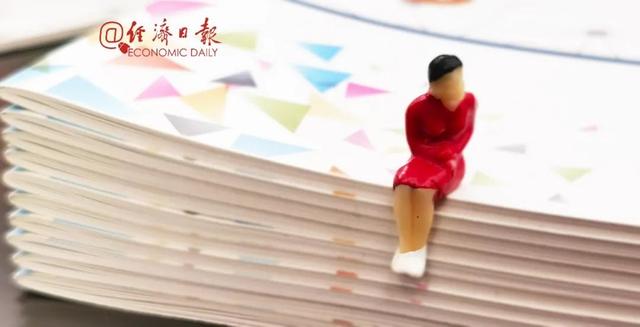In Japan for the first time in 1998, why will the effect be limited and short?
Author:Poster news Time:2022.09.23
The Ministry of Finance of Japan finally entered the market to intervene in the exchange rate.
This is the first time since June 1998, after 24 years, the Japanese government intervenes the exchange rate by selling US dollars and buying yen. The yen's exchange rate against the US dollar also rebounded 450 points to 141 lines, and finally recorded the largest single -day increase in March 2020.
However, analysts said that from a global perspective, the fundamental factor that caused the weakening of the yen in the US -Japan monetary policy has not changed. From the perspective of Japan's domestic level, the Bank of Japan has not given up on yield curve control (YCC). The policy and the Japanese government may launch financial measures later to help Japanese citizens respond to the rise in domestic prices, which is not conducive to the yen. Therefore, the effect of Japan's intervention in the yen will be limited and short. During the Asia -Pacific period today, the dollar pairs have risen above 142.
Oxford Economics chief Japanese economist Shigeto Nagai told the First Financial reporter that until the financial market was convinced that the Federal Reserve ’s interest rate hike cycle would reach its peak, and Japan’ s inflation prospects would be gentle, otherwise Japan would be more mild. The pressure of Yuan Weak and the yield of Japanese Treasury bonds will continue.
He analyzed that "the weakness of the Japanese yen has continued to rise, which has indeed made Japan feel more painful, especially for small companies with limited low -income families and pricing capabilities. It will adjust the monetary policy because of exchange rate issues. Although foreign investors may continue to challenge the yield of Japanese yen and Japanese Treasury bonds, the Bank of Japan has no choice but to adhere to the current YCC policy. The same is true. "

Unilateral intervention, the U.S. -Japan spread expansion trend remains unchanged
Historically, Japan has frequently conducted foreign exchange intervention. The largest yen intervention occurred in April 1998. At that time, the Bank of Japan bought 2.8 trillion yen (20 billion US dollars) in the foreign exchange market. But even so, it did not immediately stop the yen from falling. Until August of that year, the collapse of Russian debt defaults and long -term capital management hedge funds caused confusion in the financial market. And began to appreciate quickly. As of the end of December of that year, the yen's exchange rate against the US dollar rebounded by 30%from low.
Unlike 1998, it occurred on September 22 that Japan's intervention in the Japanese yen was unilateral.
"We believe that Japan's foreign exchange intervention is only a volatility for the US dollar instead of changing the depreciation of the yen." Said It is a meeting of the Governor of the G20 (G20) Central Bank and the Finance Minister of Treasury, which was held in Washington in early October. At that time, Japan will have to persuade the US authorities to strengthen the US dollar is a problem, and this is a difficult task because the United States is currently in the United States. It is still enjoyable to the US dollar strong. "Unlike 1998, the weakness of the Japanese yen is not driven by arbitrage exchanges. In fact, according to the data of the Commodity Futures Trading Commission, the short betting of the yen at the current level of the leverage was 35%lower than the level in mid -April, and the transaction price of the Japanese yen at that time was about $ 125.
Jens Nordvig, the founder of New York Research Company EXANTE DATA, said: "The Ministry of Finance of Japan is trying to maintain the US dollar exchange rate to the yen exchange rate for at least 145 within a period of time. The yen exchange rate has declined sharply. The weakening of the Eagle Fed and the global economic growth is enough to continue to support the powerful combination of the US dollar. Therefore, the intervention at best can only keep the US dollar exchange rate in the 140 ~ 145 range within a period of time. "
Chris Turner, a foreign exchange strategy director of the Netherlands International Group in London, holds a similar point of view. “诚然,在美元对日元涨超145后,投资者会三思而后行。但一旦汇率跌至140/141附近,投资者又会有很大动力买入美元,因为投资者清楚地知道,日本Unable to reverse this wave of strong dollars, this wave will support the US dollar in the remaining time this year. "He said," We will enter the volatile range of the dollar to the yen 140 ~ 145. "
The Bank of Japan does not cooperate
Not only the external environment, the higher domestic inflation in Japan will also force the government to make financial stimuli and drag the yen. Japan ’s August Consumer Price Index (CPI), which was announced earlier this week, has increased to 2.8 %, a new high in the past 8 years, which has increased the pressure of the Kishita government. According to foreign media reports, some important officials within the Liberal Democratic Party have put pressure on it and demand that at least $ 105 billion in new fiscal expenditure plans to alleviate the impact of inflation. Once the government increases fiscal expenditure, it will only further exacerbate the yen weakness.
The important thing is that the Bank of Japan still maintains a wide volume policy in the context of the general interest rate hikes around the world, and cannot cooperate with foreign exchange intervention at the monetary policy level.
- END -
Make money while running?It's just beautiful

A pair of virtual running shoes, the price ranges from 5,000 yuan to 40,000 yuan, ...
The Nanyang Branch has strictly reorganized the style of "lying flat cadres"
In order to further strengthen the cadre style rectification, promote party members and cadres to fight, fight tough battles, and win the style of battle. Recently, the Nanyang Branch of Agricultural